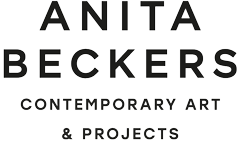Brandenburger Tor No1, 44,5 x 57,8 cm, watercolour on paper, 2020
KOTA EZAWA
28.10.2021 – 04.12.2021

We are particularly pleased to announce the opening of our exhibition Opus II by Kota Ezawa (*1969).
The exhibition is accompained by a publication with a text by Dr. Barbara Gordon, Washington.
Opening: October 28th, 2021, 4 – 9 PM
OPUS is a three-part exhibition project by German/American artist Kota Ezawa on the construction and fall of the Berlin Wall in the context of German history.
In our gallery we show OPUS II, part I of which has already opened at Gallery Ryan Lee in New York. It brings together two different architectural interventions that took place in Germany between 1923 and 1989: the creation and destruction of the groundbreaking installation Merzbau by Kurt Schwitters (built 1923-37; destroyed in 1943) and the Berlin Wall (built in 1961; destroyed in 1989).
Kota Ezawa is known for translating and reinterpreting documentary footage – news, film clips, other works of art, much of what is stored in our memory – into watercolor animations. For Ezawa, who was born and raised in Germany and now lives in the United States and Berlin, these places — accessible only through mediated images, simulacres, and reconstructions — become „ghosts of decisive moments in German history”.
At the heart of all three exhibitions in New York, Frankfurt and Berlin is THERISEANDFALLOFTHEBERLINWALL, a two-and-a-half-minute video projected onto a free-standing concrete wall. Ezawa selects images that he reproduces as watercolors and then weaves into a condensed animated narrative, relying on available newsreel material.
In this piece, the black-and-white images of the construction of the Wall are accompanied by Joseph Haydn’s „Opus 76 No.3“, a string version of the German national anthem. At the moment of the destruction of the wall, the images switch to color, and the soundtrack becomes an ambient remix of Pink Floyd’s „Another Brick in the Wall, Pt. 1“, accompanied by the original sounds of the crowd. The soundtrack, especially the German national anthem, determines the character and duration of the work. Haydn’s melody is confronted with harrowing images of barbed wire, military patrols, and the East Berliners‘ attempts to flee to the West, as the Wall around them closes. Cheers, chants, and chisel beats add a sense of triumph to the images of the wall being dismantled. Kota Ezawa uses this juxtaposition to continue his investigation of the relationship between the nostalgic worship that is supposed to evoke the national anthem and the collective consciousness that shapes national identity, perception, and memory.
In addition to the main work, the video animation THERAISEANDFALLFROMTHEBERLINWALL, the exhibition in our gallery in Frankfurt also shows watercolors from the construction and fall of the Wall and three other light boxes that describe historical moments that have also burned themselves deep into our collective memory.
The kneeling of Willy Brandt in Warsaw (1970, 25 years after the end of the Second World War), the first wreath-laying of a sitting American president in Hiroshima by Barack Obama (2016, 71 years after the dropping of the first atomic bomb) and a small lightbox from 2021 with a picture of the airport in Kabul, where desperate Afghans tried to overcome a wall to leave the country at the last moment and escape the Taliban.
The title of the exhibition OPUS refers not only to Haydn’s composition, but also to Ezawa’s experiences with the pandemic. The works, which began shortly before the outbreak of the pandemic and were completed with the lifting of restrictions, are a pandemic opus, a documentation of Ezawa’s daily activities during this time. As a result, they will forever be associated with this unprecedented moment of the twenty-first century, even if their theme is rooted in the historical ruptures of the twentieth century.
Taken together, Ezawa explains, the works in Opus tell „a story of building, construction, loss and destruction. While focusing on events that took place in a country over a period of 66 years, these representations serve as universal symbols for the past, present and future of border walls and avant-garde art.“
Text courtesy Ryan Lee, NY
OPUS I Ryan Lee Gallery, New York
OPUS II Anita Beckers Gallery, Frankfurt
OPUS III Galerie Kornfeld (68projects), Berlin
Experience the exhibition online:
THERISEANDFALLOFTHEBERLINWALL, 2.10 min, video, colour and sound, 2021















